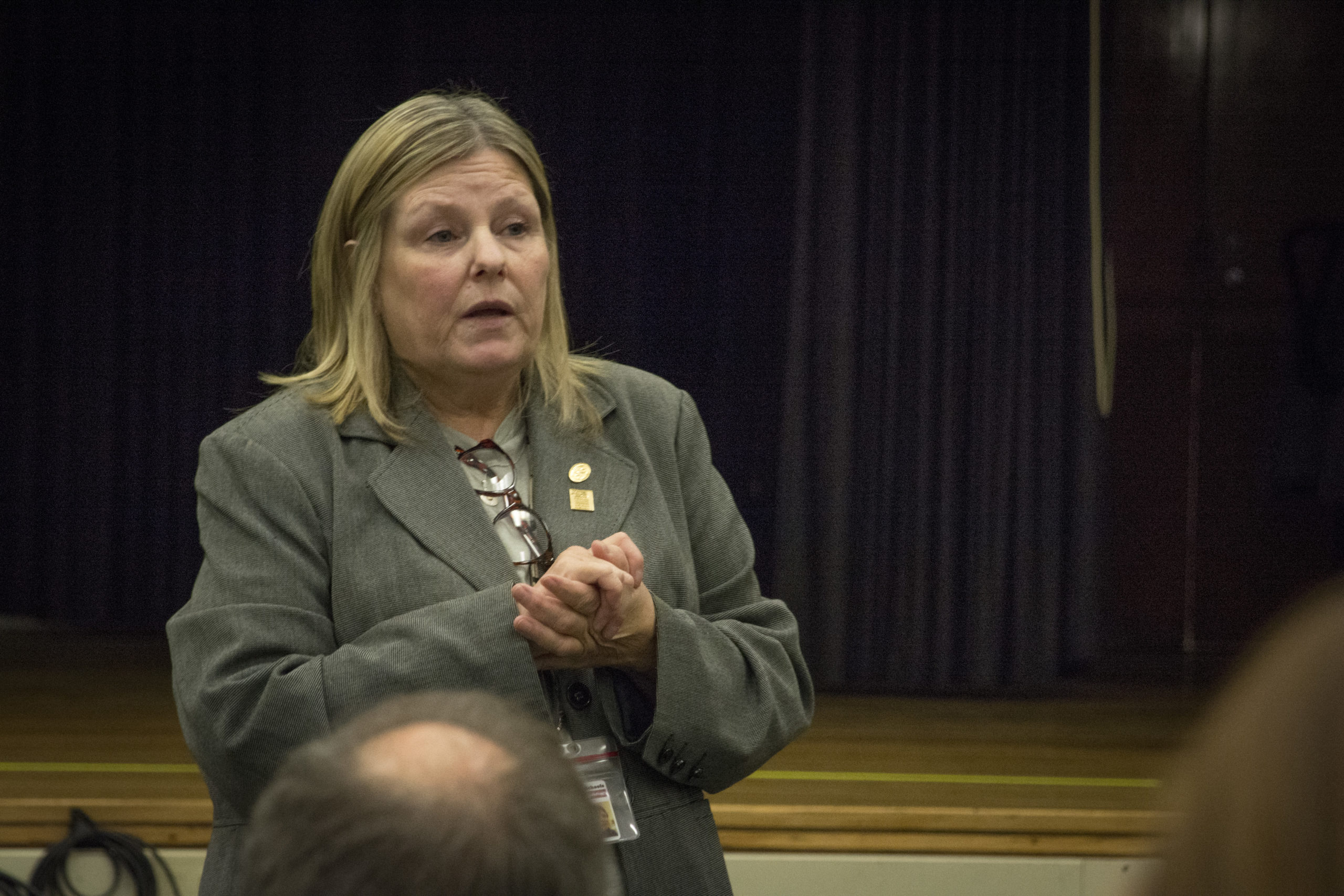Small portions, bland meals and hungry children were among some of the concerns a dozen parents expressed with the Great Neck Public Schools’ director for food and nutrition services on Wednesday night, following a wave of concerns on social media.
The event, sponsored by the UPTC Health Education Committee, sought to bring together Patricia Daley-Jimenez, the schools’ director of food and nutrition services, with parents to educate them about what their children eat in school and the regulations the district must abide by.
Jenia Yashaya and Claudine Sarraf-Amirian, co-chairs of the committee, said they decided that, after more than a year of back-and-forth of relaying concerns, it would be good to bridge a gap and educate the parents about how much – or little – can be done.
“We had a lot of complaints from everyone so we were back and forth with her [Jimenez] and we were at a certain standpoint that we [knew] only so much could be changed because of the USDA regulations and because of the guidelines, rules and regulations,” Sarraf-Amirian said.
“We figured the best thing to do was to bring Jimenez in front of the parents and for her to hear it straight from them what their interests are and that we could all brainstorm and work as a team,” Yashaya added.
According to Daley-Jimenez, school lunches must feature five meal components: fruits, vegetables, grains, a meat or meat alternate and milk. Each of those must then fall within a calorie count, trans and saturated fat restrictions, sodium and sugar limits, and more based on grade levels.
“Everything I do is regulated,” Jimenez told the parents. “I kid you not.”
These regulations largely fall under the Healthy Hunger-Free Kids Act of 2010, which is tied to the National School Lunch Program and other nutrition programs. It directed the USDA to establish nutrition standards to try developing healthy school environments.
The law in turn provides reimbursements and assistance for providing the necessary foods.
According to Daley-Jimenez and John Powell, the assistant superintendent for business, around 600 kids in the district are eligible for free or reduced meals under the lunch program and 300 utilize it on a daily basis.
“The whole idea of the school and breakfast program is to provide meals that we don’t think people are getting at home,” Powell said at the forum. “These programs were not necessarily designed for Great Neck, but for certain districts where children are not getting nutritious meals at home, so Pat [Jimenez] is handcuffed by regulations that are probably more geared to inner cities, lower economic areas.”
“That’s what we’re up against in terms of portions, offerings and things like that,” he added.
Consequently, Jimenez said, pulling away from the program could cost the district hundreds of thousands of dollars needed to be able to provide for everyone.
Ultimately, Jimenez said that parents have the option of packing lunches at home, reaching out to the legislators to try changing the laws and talking with principals if there are any issues with bringing lunches in.
Jimenez also said that she would investigate the possibility of allowing a sandwich to be classified as a snack so children could buy another and not be hungry, review bids for certain food products and encourages parents to keep in touch via email.



